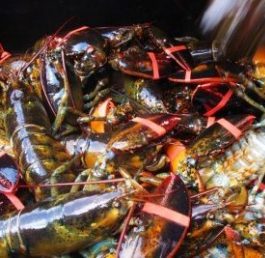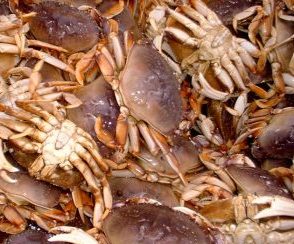Tag Archives: Southeast Alaska
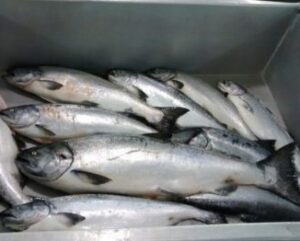
Alaska fishermen bewildered, alarmed at loss of king salmon
There’s an unsolved fish mystery playing out right now along a rugged, 300-mile stretch of Southeast Alaska coastline: What’s killing off the thousands of king salmon that, at an increasing rate, swim out to sea and don’t return to spawn? “There’s a big ocean out there,” said Tad Fujioka, a commercial fisherman in Sitka. “And it’s kind of a black box.” Alaska fishermen and scientists don’t know what, exactly, is causing king salmon returns to plummet across Southeast. But they’re trying to adapt to the consequences: closures for certain fisheries and new limits on catches,,, click here to read the story 10:20

Southeast Alaska winter troll fishery to remain open
Commercial trolling for king salmon in Southeast Alaska will stay open this winter beyond December. The Alaska Department of Fish and Game announced the winter season will be open until further notice and could stay open until mid-March. That depends on any measures the Board of Fish adopts in January to protect wild Chinook returning to Southeast Alaska rivers. Historically low returns in recent years have prompted some conservation measures, including a region-wide shut down for king fishing in the summer of 2017. click here to read the story 08:13
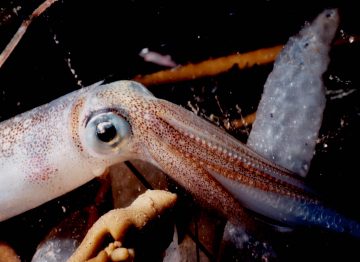
Squid fishery proposed for Southeast as squid follow warmer waters to Alaska
Following warmer waters to Alaska, market squid may be here to stay and at least four Southeast fishermen think there’s enough here to begin catching and marketing them. A proposal to create a squid fishery in Southeast is slated for the Alaska Board of Fisheries meeting Jan. 11-23 in Sitka. If adopted, the board would work with fishermen and stakeholders to develop a purse seine fishery for market squid, which are already being caught in lucrative fisheries in California and Oregon. click here to read the story 12:40
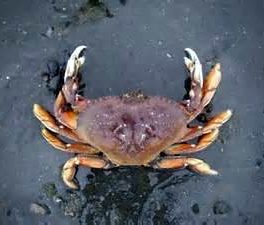
Southeast Alaska: Commercial Dungeness fall fishery better than expected
The summer season for Dungeness crab didn’t go so well. In fact, it was the lowest harvest in over 30 years and managers ended up closing the fishery three weeks early. The summer season brought in 1.3 million pounds, less than half the average harvest. With such a poor summer, state regulation required the fall season for Dungeness crab be shortened to 30 days, half the length of the normal fishery for most of Southeast. So, when the numbers came in, managers were surprised that harvests were not low. Joe Stratman is Alaska Department of Fish and Game’s lead crab biologist for Southeast. “We exceeded our expectations which is encouraging,” Stratman said. audio report, click here to read the story 13:50
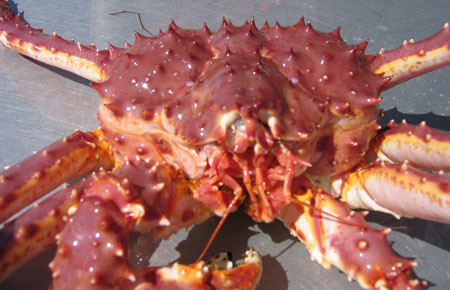
Commercial fishing for Southeast red king crab to open this fall after six years
Southeast Alaska will open to commercial fishing for red king crab this fall for the first time in six years. The crab population has seen a steady increase, according to state surveys. But whether the opening set for November 1 will be lucrative is still to be seen. Joe Stratman, who is Alaska Department of Fish and Game’s lead crab biologist for Southeast, said the red crab population has been on the rise since 2013. “Basically, in the last four or five years we’ve seen improvement in legal, mature biomass estimates in Southeast,” Stratman said. click here to read the story 15:30
Salmon trollers get winter season in Southeast Alaska
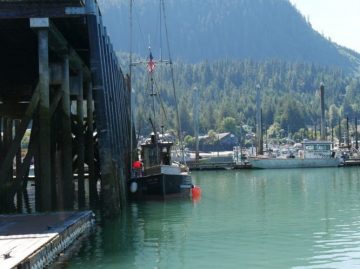 The good news for commercial salmon trollers in Southeast Alaska is they will have a winter season for king salmon starting up next month; the bad news is that winter season may be shortened this year. Trollers have been concerned over the possibility of no winter season and what low king numbers mean for the future of the fishery. The Alaska Department of Fish and Game announced September 20 that the winter troll season will open October 11th. It could remain open through the end of December but managers will have to wait and see about fishing opportunity later in the winter. click here to read the story 11:44
The good news for commercial salmon trollers in Southeast Alaska is they will have a winter season for king salmon starting up next month; the bad news is that winter season may be shortened this year. Trollers have been concerned over the possibility of no winter season and what low king numbers mean for the future of the fishery. The Alaska Department of Fish and Game announced September 20 that the winter troll season will open October 11th. It could remain open through the end of December but managers will have to wait and see about fishing opportunity later in the winter. click here to read the story 11:44
Southeast summer Dungeness harvest the worst in decades
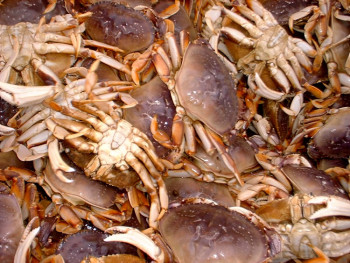 The summer season for Dungies closed three weeks early in Southeast. I sat down with Kellii Wood, a Crab Biologist with the Alaska Department of Fish and Game, to ask what happened. “How did it go this year,” I ask her. Wood laughs and gives a drawn out, “well.” The thing is Dungeness crab in Southeast are tricky because state managers don’t know a lot about them. The crab are on a four to five year life cycle and the commercial fishery is expected to fluctuate accordingly. But there are no stock assessment surveys so biologists rely on commercial harvests to track the population.,,, Wood says there has been some anecdotal evidence from fishermen reporting light-colored crab near the end of the fishery. That would indicate crab that recently molted. So this summer’s low harvest could be due to a late molt. It could mean that the crab are there, it’s just bad timing. Audio, click hereto read the story 12:36
The summer season for Dungies closed three weeks early in Southeast. I sat down with Kellii Wood, a Crab Biologist with the Alaska Department of Fish and Game, to ask what happened. “How did it go this year,” I ask her. Wood laughs and gives a drawn out, “well.” The thing is Dungeness crab in Southeast are tricky because state managers don’t know a lot about them. The crab are on a four to five year life cycle and the commercial fishery is expected to fluctuate accordingly. But there are no stock assessment surveys so biologists rely on commercial harvests to track the population.,,, Wood says there has been some anecdotal evidence from fishermen reporting light-colored crab near the end of the fishery. That would indicate crab that recently molted. So this summer’s low harvest could be due to a late molt. It could mean that the crab are there, it’s just bad timing. Audio, click hereto read the story 12:36
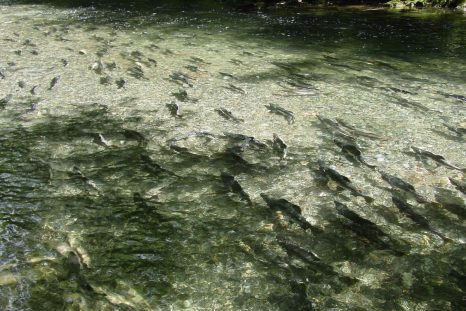
Scientist says hatchery strays could threaten wild fish populations
Whether it’s thanks to environmental cues, a keen sense of smell or a nifty magnetic instinct, Pacific salmon’s ability to navigate back to their home streams has captivated scientists and the general public alike. But, contrary to popular notions, a small number of Pacific salmon stray from their predetermined paths every year. And now, a new study found that hatchery salmon that wander from their home stream could pose an additional danger to their wild counterparts. Scientists have long warned that hatchery strays compete with wild fish for resources in streams and ocean waters, and could threaten wild populations by mixing genetically with them in unfavorable ways. click here to read the story 08:42
Southeast Alaska winter troll catch falls short of limit, Spring troll fishery underway
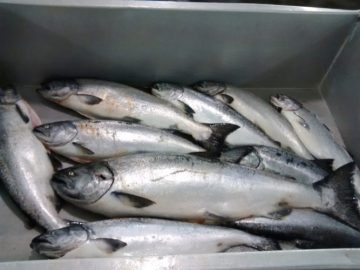 The preliminary harvest total is just over 43,000 kings. Most of those, around 40,000, are fish managed under the Pacific Salmon Treaty between the U.S. and Canada. Those fish mostly come from hatcheries in Canada and the Pacific coast of the U.S. The rest come from hatcheries in Southeast Alaska. The last two years the winter season has ended early as the fleet has surpassed a 45,000 fish guideline harvest level, or GHL, for Treaty kings. “So a down year,” said Grant Hagerman, the Alaska Department of Fish and Game’s troll management biologist for Southeast.,, Last year the season ended in record time, closing March 8. This year fishing remained open for the full season, through the end of April. Both catch rates and effort picked up in the final weeks of the season. Click here to read the story 08:46
The preliminary harvest total is just over 43,000 kings. Most of those, around 40,000, are fish managed under the Pacific Salmon Treaty between the U.S. and Canada. Those fish mostly come from hatcheries in Canada and the Pacific coast of the U.S. The rest come from hatcheries in Southeast Alaska. The last two years the winter season has ended early as the fleet has surpassed a 45,000 fish guideline harvest level, or GHL, for Treaty kings. “So a down year,” said Grant Hagerman, the Alaska Department of Fish and Game’s troll management biologist for Southeast.,, Last year the season ended in record time, closing March 8. This year fishing remained open for the full season, through the end of April. Both catch rates and effort picked up in the final weeks of the season. Click here to read the story 08:46
Southeast’s first crab fisheries of the year set to open
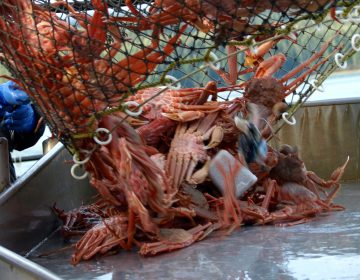 Alaska has dozens of crab species—about seven that are commercial harvested. So what’s Tanner crab like? To help answer that question, I asked Joe Stratman, the lead crab biologist for the Alaska Department of Fish and Game in Southeast. He says Tanners are related to the popular snow crab. “What I always liken it to is when they’re at the buffet line in Los Vegas they often see snow crab which is a kind of Chionoecetes opilio. Our Tanner crab in Southeast looks very similar to that. It’s a little larger,” Stratman said. Recent markets seem to like Tanner crab too. Last year’s harvest in Southeast was valued at nearly $3 million dollars. 74 permit holders participated in the fishery. They brought in a total of just over 1.3 million pounds. The price per pound averaged $2.23 which is thirty cents higher than the year before. Read the story here 11:54
Alaska has dozens of crab species—about seven that are commercial harvested. So what’s Tanner crab like? To help answer that question, I asked Joe Stratman, the lead crab biologist for the Alaska Department of Fish and Game in Southeast. He says Tanners are related to the popular snow crab. “What I always liken it to is when they’re at the buffet line in Los Vegas they often see snow crab which is a kind of Chionoecetes opilio. Our Tanner crab in Southeast looks very similar to that. It’s a little larger,” Stratman said. Recent markets seem to like Tanner crab too. Last year’s harvest in Southeast was valued at nearly $3 million dollars. 74 permit holders participated in the fishery. They brought in a total of just over 1.3 million pounds. The price per pound averaged $2.23 which is thirty cents higher than the year before. Read the story here 11:54
Southeast Alaska winter troll season slow
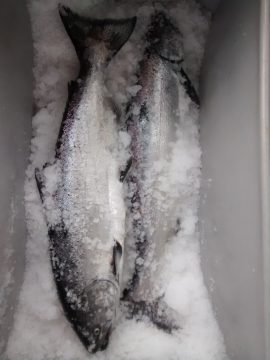 Commercial troll fishing for king salmon in Southeast Alaska this winter is not like it has been the last few years. The troll fleet catch and the number of boats out fishing are both well down from last year and also below the five and ten-year averages. By late January, the catch had neared 8,000 Chinook, with more than half of those kings landed in the waters around Sitka Sound. Eight thousand is just one quarter of what the catch was at this time last year.“I would say that the past three years have been phenomenal for the troll fishery so seeing a decrease now doesn’t necessarily mean that the fishery’s terrible, it just means that we’re going back to lower averages,” said Rhea Ehresmann is assistant troll management biologist with the Alaska Department of Fish and Game. Read the story here 19:07
Commercial troll fishing for king salmon in Southeast Alaska this winter is not like it has been the last few years. The troll fleet catch and the number of boats out fishing are both well down from last year and also below the five and ten-year averages. By late January, the catch had neared 8,000 Chinook, with more than half of those kings landed in the waters around Sitka Sound. Eight thousand is just one quarter of what the catch was at this time last year.“I would say that the past three years have been phenomenal for the troll fishery so seeing a decrease now doesn’t necessarily mean that the fishery’s terrible, it just means that we’re going back to lower averages,” said Rhea Ehresmann is assistant troll management biologist with the Alaska Department of Fish and Game. Read the story here 19:07
Southeast Alaska Dungeness fall harvest was lower than expected
 The fall harvest was approximately 403,000 pounds. That’s about 150,000 pounds less than last year. Kellii Wood is a Crab Biologist with the Alaska Department of Fish and Game. She says they’ve seen harvests like this before but it’s been a while. “It’s definitely down from previous years,” Wood says. “We have been lower but I believe it was in the 90s.” Wood says the harvest is far below the five year fall average of 732,000 pounds. About one-fifth of the year’s harvest comes in the fall. This year was just a little below that. Wood says the recent average is a bit skewed when you consider 2014. It was an unusually good year seeing the third highest fall harvest on record since the 1960s. That fall fishermen harvested about a million pounds. Listen to the audio report here 13:55
The fall harvest was approximately 403,000 pounds. That’s about 150,000 pounds less than last year. Kellii Wood is a Crab Biologist with the Alaska Department of Fish and Game. She says they’ve seen harvests like this before but it’s been a while. “It’s definitely down from previous years,” Wood says. “We have been lower but I believe it was in the 90s.” Wood says the harvest is far below the five year fall average of 732,000 pounds. About one-fifth of the year’s harvest comes in the fall. This year was just a little below that. Wood says the recent average is a bit skewed when you consider 2014. It was an unusually good year seeing the third highest fall harvest on record since the 1960s. That fall fishermen harvested about a million pounds. Listen to the audio report here 13:55
Southeast Alaska Dungeness crabbers see full-length summer, fall seasons
 Commercial Dungeness crabbers have a full two-month summer and two-month fall season for most of Southeast Alaska again this year. The Alaska Department of Fish and Game announced this week the summer season would continue through August 15 and a fall season is planned for October and November. The season length is set based on the catch from the first week of fishing. Crabbing opened on June 15th. Adam Messmer, the department’s shellfish assistant manager for Southeast, says the total season catch is projected to wind up at 2.89 million pounds and the quality of the catch has started off well. “There’s a lot of people saying that there was really hard crab, full crab, not a lot of soft shell around, which is kindof an odd thing for this time of year, usually there’s at least a reasonable percentage of soft shell but it sounds like a lot of good, really high quality crab,” Messmer said. Read the rest here 09:31
Commercial Dungeness crabbers have a full two-month summer and two-month fall season for most of Southeast Alaska again this year. The Alaska Department of Fish and Game announced this week the summer season would continue through August 15 and a fall season is planned for October and November. The season length is set based on the catch from the first week of fishing. Crabbing opened on June 15th. Adam Messmer, the department’s shellfish assistant manager for Southeast, says the total season catch is projected to wind up at 2.89 million pounds and the quality of the catch has started off well. “There’s a lot of people saying that there was really hard crab, full crab, not a lot of soft shell around, which is kindof an odd thing for this time of year, usually there’s at least a reasonable percentage of soft shell but it sounds like a lot of good, really high quality crab,” Messmer said. Read the rest here 09:31
Commercial Dungeness fishery opens Wednesday in Southeast Alaska
 The summer commercial Dungeness crab fishery in Southeast opens Wednesday at 8 a.m. After a record season two years ago, and an average catch in last season, officials are anticipating more crabbers on the water this week. Stuart DeWitt has been commercial fishing for dungy for close to five years. He’s one of a few fishermen in Haines that drops pots before starting the commercial salmon season. According to Alaska Department of Fish and Game, Dungeness crab went for an average of $2.95 a pound during the 2014-2015 season. Last season, the average was $3.02 per pound, an all-time high since the mid ‘80s when the department started tracking prices. The 2014-15 season was a banner harvest, with around $14 million worth of crab garnered, or around 5 million pounds. Last season yielded about 3.2 million pounds. Audio report, read the rest here 08:56
The summer commercial Dungeness crab fishery in Southeast opens Wednesday at 8 a.m. After a record season two years ago, and an average catch in last season, officials are anticipating more crabbers on the water this week. Stuart DeWitt has been commercial fishing for dungy for close to five years. He’s one of a few fishermen in Haines that drops pots before starting the commercial salmon season. According to Alaska Department of Fish and Game, Dungeness crab went for an average of $2.95 a pound during the 2014-2015 season. Last season, the average was $3.02 per pound, an all-time high since the mid ‘80s when the department started tracking prices. The 2014-15 season was a banner harvest, with around $14 million worth of crab garnered, or around 5 million pounds. Last season yielded about 3.2 million pounds. Audio report, read the rest here 08:56
Halibut season opens; SE fleet already lands 260,000 lbs.
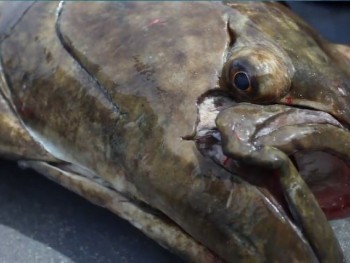 A little more than three days into the 2016 halibut season, Area 2C, Southeast Alaska, has had the fleet hitting it the hardest. Nearly 260,000 pounds had been landed in Southeast, compared to less than 50,000 in Area 3A, Central Gulf of Alaska, and no activity in other areas of the state. The state-wide directed commercial halibut quota is just over 17 million pounds. Prices have started about where they left off last year, with Kodiak reportedly at $6.25 for fish under 20 pounds, $6.50 for fish 20 to 40 pounds, and $6.85 for fish 40 pounds and up. Read the rest here 10:06
A little more than three days into the 2016 halibut season, Area 2C, Southeast Alaska, has had the fleet hitting it the hardest. Nearly 260,000 pounds had been landed in Southeast, compared to less than 50,000 in Area 3A, Central Gulf of Alaska, and no activity in other areas of the state. The state-wide directed commercial halibut quota is just over 17 million pounds. Prices have started about where they left off last year, with Kodiak reportedly at $6.25 for fish under 20 pounds, $6.50 for fish 20 to 40 pounds, and $6.85 for fish 40 pounds and up. Read the rest here 10:06
Burgeoning sea otter population in southern Southeast Alaska depletes commercial fishery species
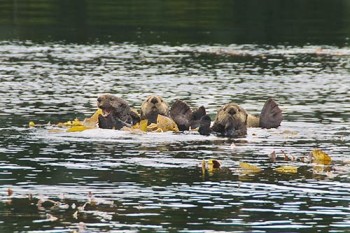 Sea otters enjoy feeding on sea cucumbers, sea urchins, Dungeness crabs and geoducks. Unfortunately, so do people. In southern Southeast Alaska, commercial fisheries for these invertebrate species provide income for local economies. At the same time, a growing population of sea otters is consuming the invertebrates. Predation from the otters is already having an economic impact on commercial fisheries, and the effect is likely to be even greater as the sea otter population continues to increase. Read the post here 07:43
Sea otters enjoy feeding on sea cucumbers, sea urchins, Dungeness crabs and geoducks. Unfortunately, so do people. In southern Southeast Alaska, commercial fisheries for these invertebrate species provide income for local economies. At the same time, a growing population of sea otters is consuming the invertebrates. Predation from the otters is already having an economic impact on commercial fisheries, and the effect is likely to be even greater as the sea otter population continues to increase. Read the post here 07:43
Southeast’s salmon season begins ramping up as pink harvests start rise
 Southeast Alaska’s first king salmon troll opening of the summer has come and gone, and now the seiners are about the take center stage. Last week, fishermen caught 600,000 pink salmon, according to figures provided by the Alaska Department of Fish and Game, and that figure is expected to rise each week until the first full week of August. Pink salmon run in a two-year cycle, and 2013 brought an unprecedented harvest of 95 million pink salmon in Southeast, more than any since large-scale commercial harvesting began in the late 1800s. Read the rest here 14:16
Southeast Alaska’s first king salmon troll opening of the summer has come and gone, and now the seiners are about the take center stage. Last week, fishermen caught 600,000 pink salmon, according to figures provided by the Alaska Department of Fish and Game, and that figure is expected to rise each week until the first full week of August. Pink salmon run in a two-year cycle, and 2013 brought an unprecedented harvest of 95 million pink salmon in Southeast, more than any since large-scale commercial harvesting began in the late 1800s. Read the rest here 14:16
Bad weather keeping halibut boats tied to dock, and various other fish news reports
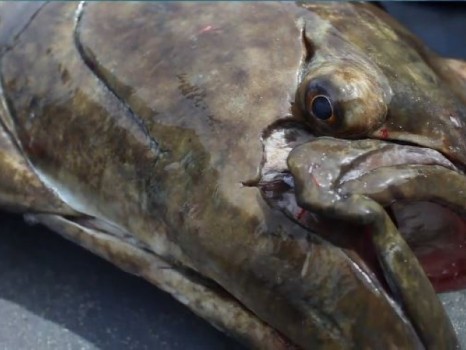 Ten days into the 2015 halibut season, prices are beginning to fall slightly, but production is nearly nonexistent, at least in the central Gulf of Alaska, Area 3A. Stormy weather and big tides have conspired to make a slow start to the season in Area 3A, with the weather continuing to keep boats in port this week. Boats in the area delivered only 146,000 pounds from 26 deliveries during the first 10 days, although deliveries in Southeast Alaska, Area 2C, topped out at 420,000 pounds from 62 deliveries. Read the rest here 13:58
Ten days into the 2015 halibut season, prices are beginning to fall slightly, but production is nearly nonexistent, at least in the central Gulf of Alaska, Area 3A. Stormy weather and big tides have conspired to make a slow start to the season in Area 3A, with the weather continuing to keep boats in port this week. Boats in the area delivered only 146,000 pounds from 26 deliveries during the first 10 days, although deliveries in Southeast Alaska, Area 2C, topped out at 420,000 pounds from 62 deliveries. Read the rest here 13:58
The Southeast Alaska summer troll fishery is being extended by 10 days
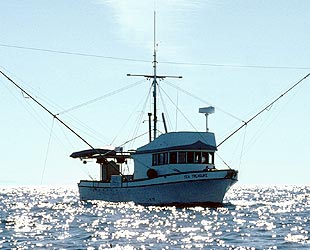 That allows continued fishing through the end of this month. The Alaska Department of Fish and Game’s Pattie Skannes says all species of salmon except Chinooks can be harvested. But the fishery is mostly about cohos. Read the rest here 19:10
That allows continued fishing through the end of this month. The Alaska Department of Fish and Game’s Pattie Skannes says all species of salmon except Chinooks can be harvested. But the fishery is mostly about cohos. Read the rest here 19:10
Southeast Alaska Winter King Salmon trolling season starts strong
 It’s about a month into the Southeast Alaska Winter king salmon season and so far, commercial trollers have had some of the best fishing they’ve seen in the last 20 years, according to the Alaska Department of Fish and Game. more@ktoo 12:26
It’s about a month into the Southeast Alaska Winter king salmon season and so far, commercial trollers have had some of the best fishing they’ve seen in the last 20 years, according to the Alaska Department of Fish and Game. more@ktoo 12:26
Coast Guard terminates 5 vessel voyages for safety violations in Southeast Alaska . All five vessel crews were required to return to port in Petersburg
Coast Guard Station Ketchikan boarding teams terminated the voyages of the vessels following at-sea commercial fishing vessel safety boardings where a variety of safety violations were identified.. continued@uscgnews![]()
Pacific halibut fisheries in Southeast Alaska and the Central Gulf of Alaska – NOAA seeks public input on proposed halibut catch sharing plan
The public comment period on the proposed rule is open for 45 days from the date of publication in the Federal Register. Address comments to Glenn Merrill, Assistant Regional Administrator, Sustainable Fisheries Division, Alaska Regi on NMFS, Attn: Ellen Sebastian, and identified by FDMS Docket Number NOAA-NMFS-2011-0180. Comments may be submitted by any of the following methods: Electronic Submission: via the Federal e-Rulemaking Portal – Mail: P.O. Box 21668, Juneau, AK 99802-1668 – Fax: 907-586-7557 readproposedrule news release
on NMFS, Attn: Ellen Sebastian, and identified by FDMS Docket Number NOAA-NMFS-2011-0180. Comments may be submitted by any of the following methods: Electronic Submission: via the Federal e-Rulemaking Portal – Mail: P.O. Box 21668, Juneau, AK 99802-1668 – Fax: 907-586-7557 readproposedrule news release
Positive outlook for SE Alaska commercial net fisheries
 Traditional commercial net fisheries in Southeast Alaska will kick off the season Sunday. Bill Davidson is Fish and Game’s regional coordinator for commercial fisheries in Southeast. He says he’s looking forward to a productive year for both gillnetters and seiners. continued@ktoo
Traditional commercial net fisheries in Southeast Alaska will kick off the season Sunday. Bill Davidson is Fish and Game’s regional coordinator for commercial fisheries in Southeast. He says he’s looking forward to a productive year for both gillnetters and seiners. continued@ktoo
Alaska Fish Radio – Laine Welch – A grim outlook for sea otters versus Southeast Alaska fisheries.
![]() Sea otters are cleaning out valuable commercial fisheries in Southeast Alaska – they have been at it for decades. A second report updates the financial hit the otters have caused to the region’s fisheries since 2005. continued
Sea otters are cleaning out valuable commercial fisheries in Southeast Alaska – they have been at it for decades. A second report updates the financial hit the otters have caused to the region’s fisheries since 2005. continued



































